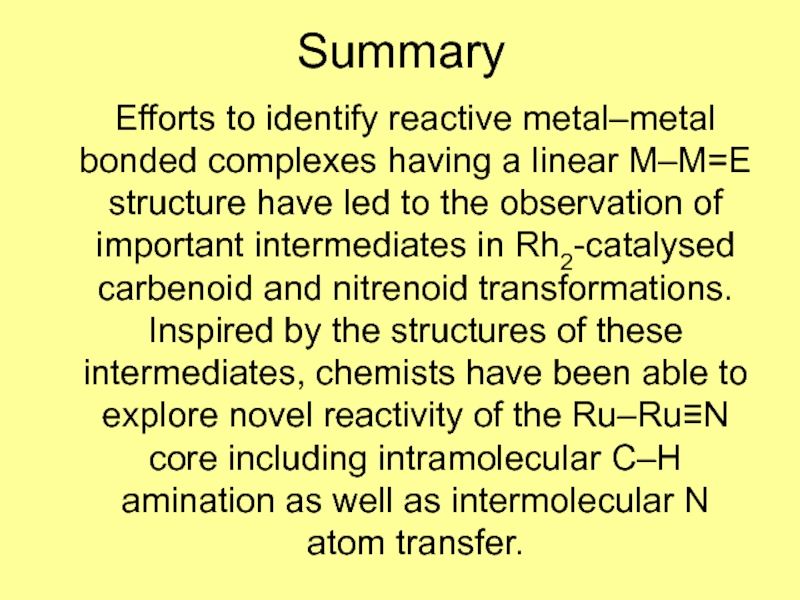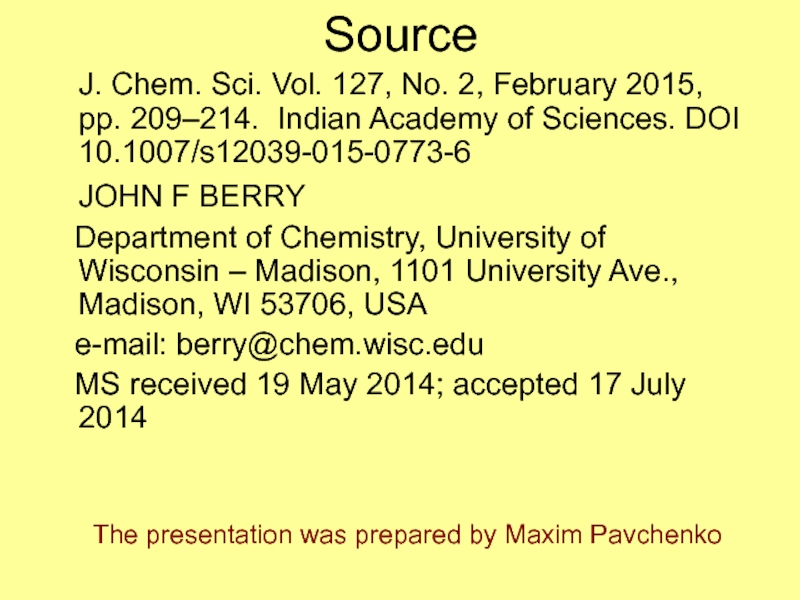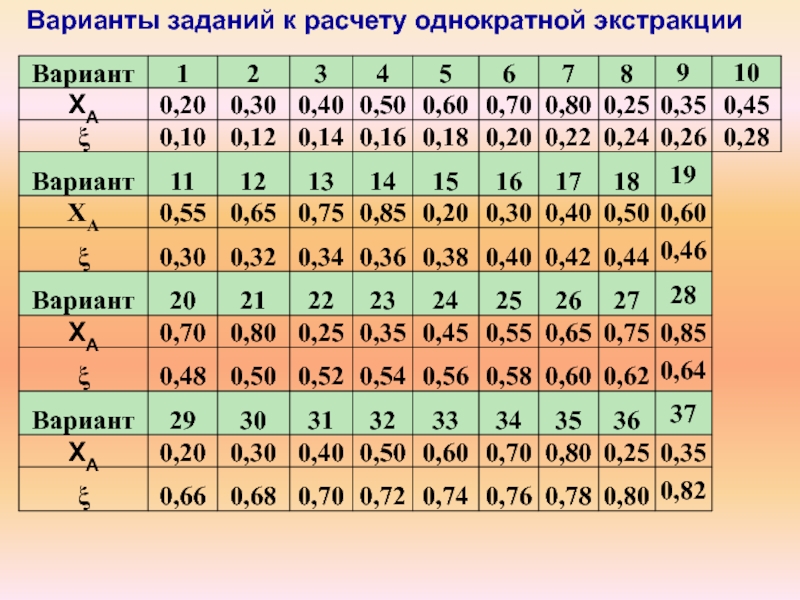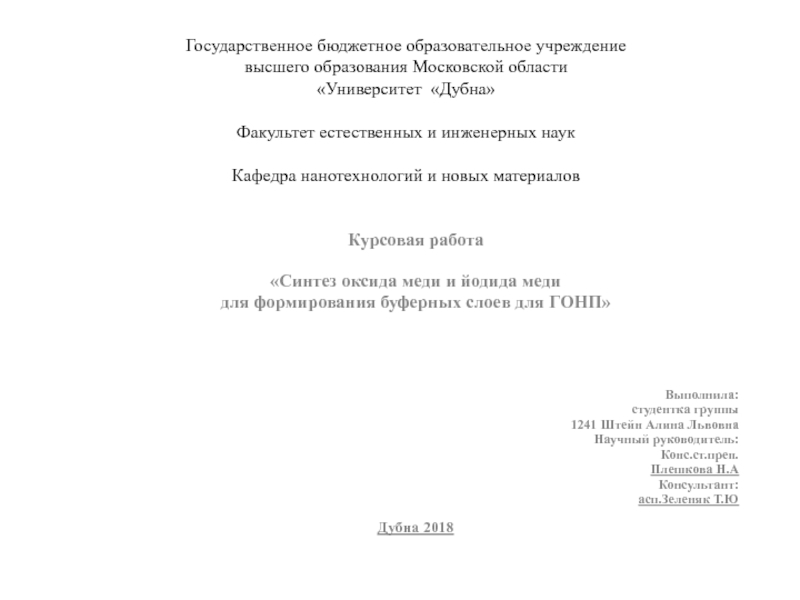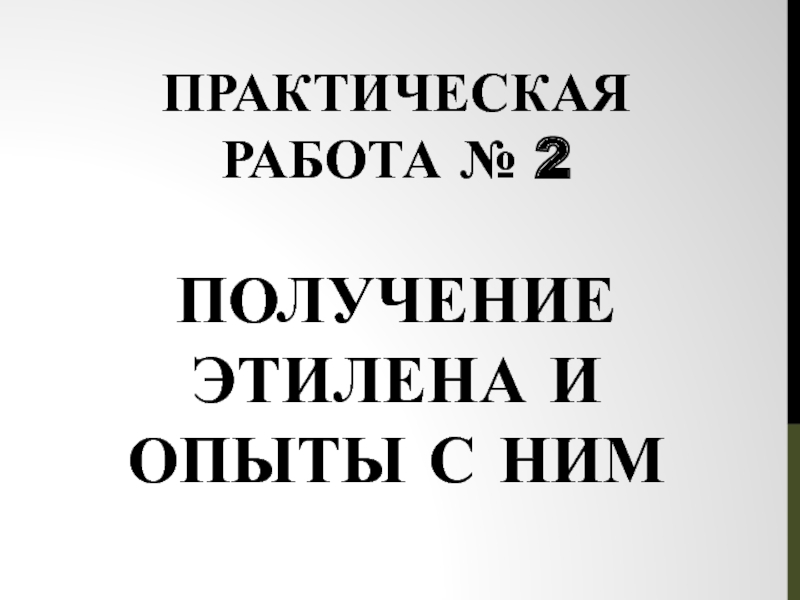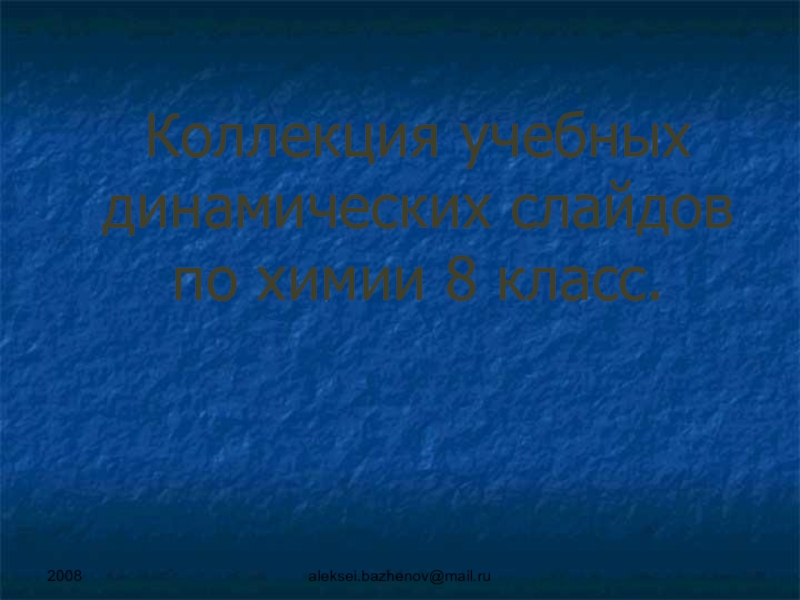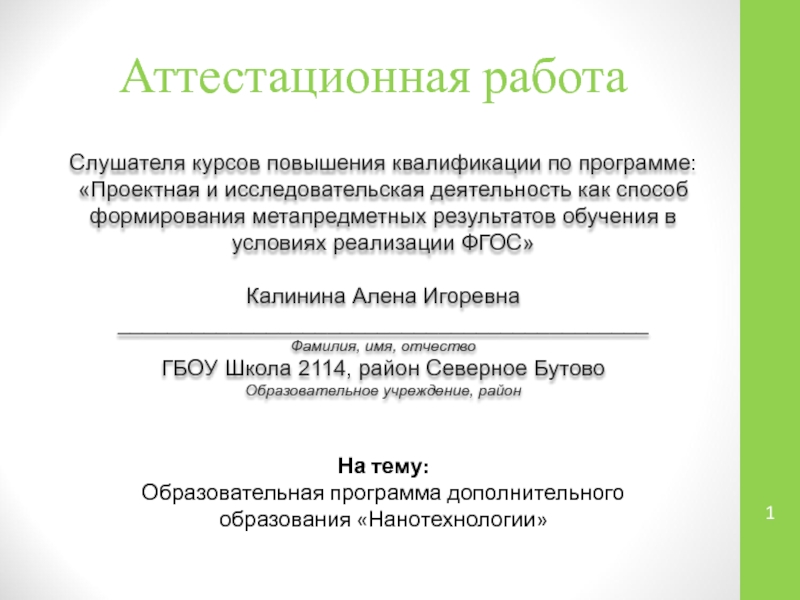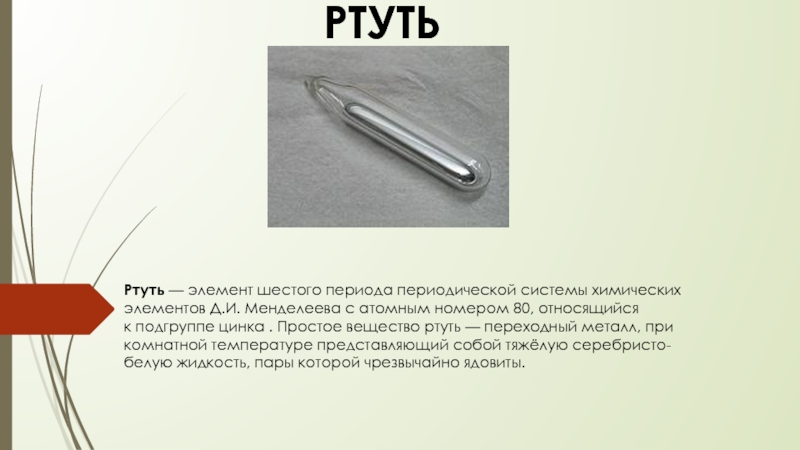- Главная
- Разное
- Дизайн
- Бизнес и предпринимательство
- Аналитика
- Образование
- Развлечения
- Красота и здоровье
- Финансы
- Государство
- Путешествия
- Спорт
- Недвижимость
- Армия
- Графика
- Культурология
- Еда и кулинария
- Лингвистика
- Английский язык
- Астрономия
- Алгебра
- Биология
- География
- Детские презентации
- Информатика
- История
- Литература
- Маркетинг
- Математика
- Медицина
- Менеджмент
- Музыка
- МХК
- Немецкий язык
- ОБЖ
- Обществознание
- Окружающий мир
- Педагогика
- Русский язык
- Технология
- Физика
- Философия
- Химия
- Шаблоны, картинки для презентаций
- Экология
- Экономика
- Юриспруденция
Metal–metal multiple bonded intermediates in catalysis презентация
Содержание
- 1. Metal–metal multiple bonded intermediates in catalysis
- 2. Overview of Rh2-catalysed C–H functionalization and C–H anination chemistries
- 3. Rh2 carbene chemistry The key electronic
- 4. Trends in reactivity for the different classes of organic diazo compounds
- 5. Preparation of the first Rh2 D/A carbene complex
- 6. Rh2 nitrene chemistry Rh2-catalysed nitrenoid chemistry is mechanistically more complex than the corresponding carbenoid chemistry
- 7. Reactions using pre-formed iminoiodinane compounds (a) – intramolecular cyclization (b) – intermolecular reaction
- 8. Proposed mechanism for intermolecular C–H amination
- 9. Ru2 nitrido chemistry Rh–Rh=E ? M–M=E
- 10. Crystal structure of Ru2[(D(3,5-Cl2)PhF)3(D(3,5-Cl2-2-NH)PhF)]
- 11. Synthetic cycle for N-atom transfer using the Ru2(chp)4 core
- 12. Summary Efforts to identify reactive
- 13. Source J. Chem. Sci. Vol.
Слайд 3Rh2 carbene chemistry
The key electronic feature of this intermediate is delocalized
Rh–Rh–C three-centre bonding with appropriate three-centre orbitals of σ and π symmetry
Слайд 6Rh2 nitrene chemistry
Rh2-catalysed nitrenoid chemistry is mechanistically more complex than the
corresponding carbenoid chemistry
Слайд 7Reactions using pre-formed iminoiodinane compounds
(a) – intramolecular cyclization
(b) – intermolecular reaction
Слайд 8 Proposed mechanism for intermolecular C–H amination
Organic groups on the catalyst
are removed for clarity
Слайд 9Ru2 nitrido chemistry
Rh–Rh=E ? M–M=E ? Ru–Ru≡N
structures
structures
structure
(E = CR2/NR)
The first
Ru2 nitrido compound –Ru2(DPhF)4N
(DPhF = N,N′-diphenylformamidinate) – was found to be thermally unstable
(DPhF = N,N′-diphenylformamidinate) – was found to be thermally unstable
In an effort to understand the nature of this instability,
the related Ru2(D(3,5-Cl2)PhF)4N3 azide complex was investigated
Слайд 12Summary
Efforts to identify reactive metal–metal bonded complexes having a
linear M–M=E structure have led to the observation of important intermediates in Rh2-catalysed carbenoid and nitrenoid transformations. Inspired by the structures of these intermediates, chemists have been able to explore novel reactivity of the Ru–Ru≡N core including intramolecular C–H amination as well as intermolecular N atom transfer.
Слайд 13Source
J. Chem. Sci. Vol. 127, No. 2, February 2015,
pp. 209–214. Indian Academy of Sciences. DOI 10.1007/s12039-015-0773-6
JOHN F BERRY
Department of Chemistry, University of Wisconsin – Madison, 1101 University Ave., Madison, WI 53706, USA
e-mail: berry@chem.wisc.edu
MS received 19 May 2014; accepted 17 July 2014
JOHN F BERRY
Department of Chemistry, University of Wisconsin – Madison, 1101 University Ave., Madison, WI 53706, USA
e-mail: berry@chem.wisc.edu
MS received 19 May 2014; accepted 17 July 2014
The presentation was prepared by Maxim Pavchenko
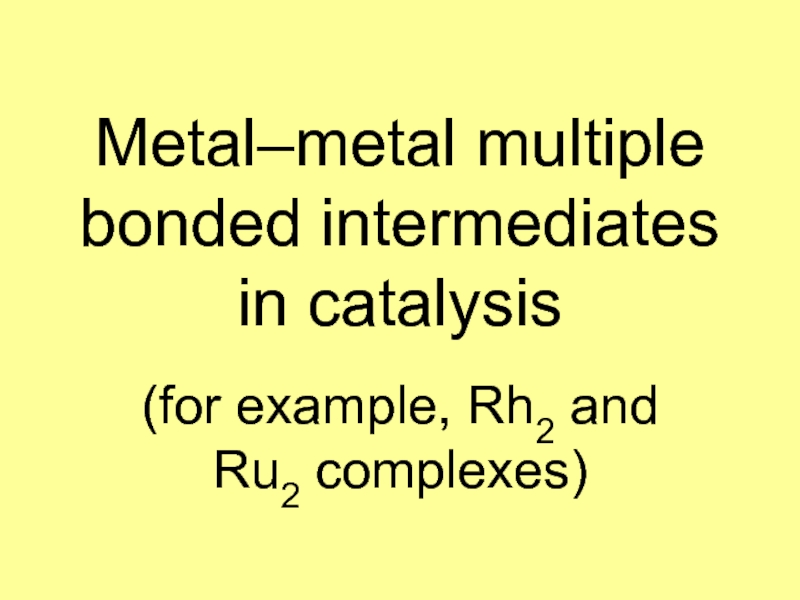
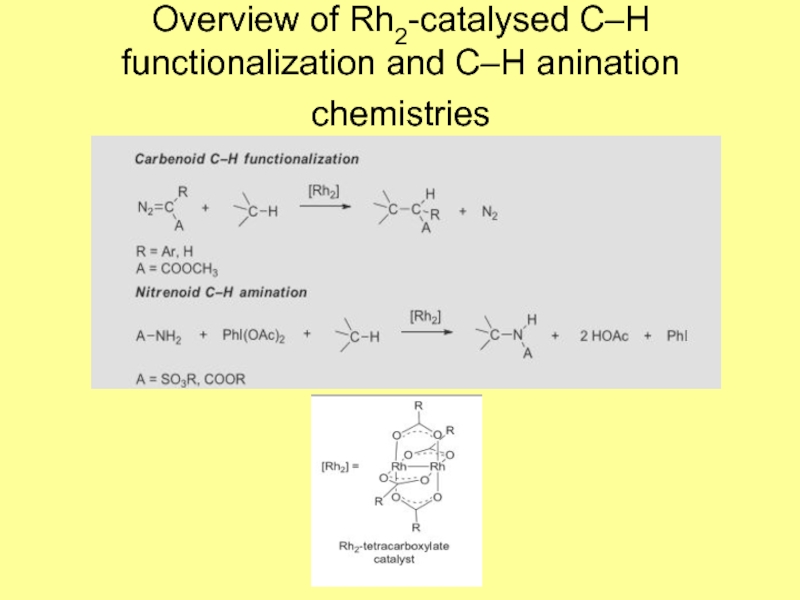

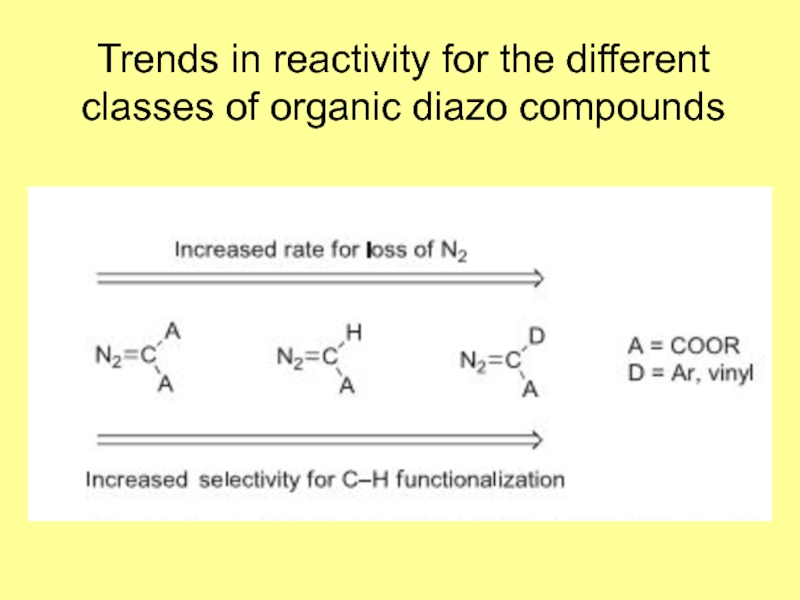
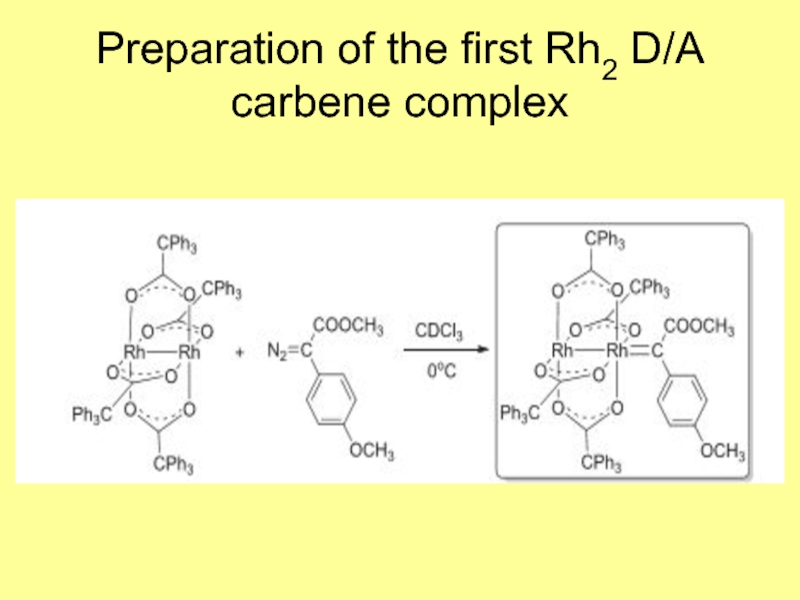
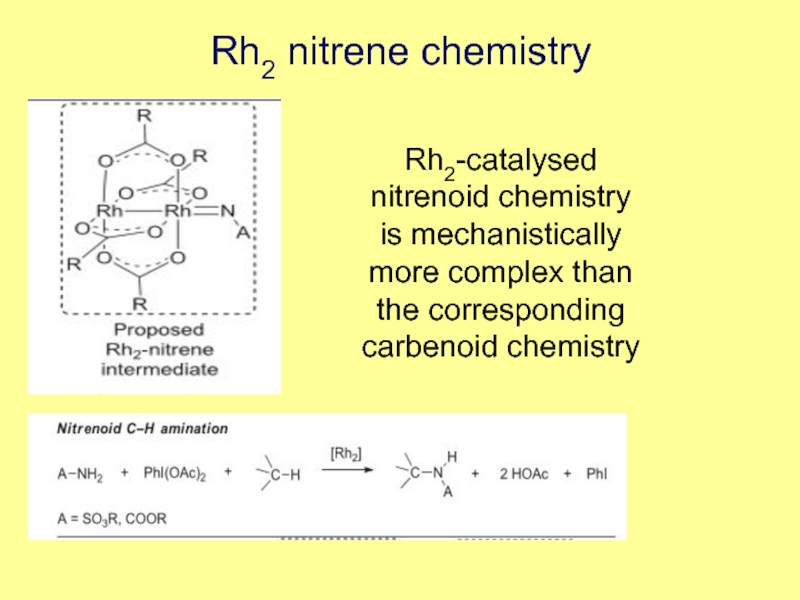
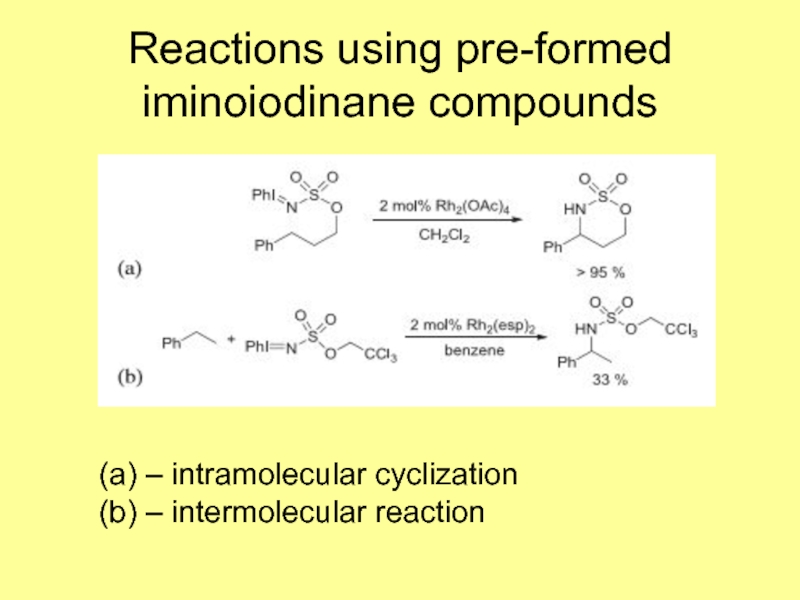
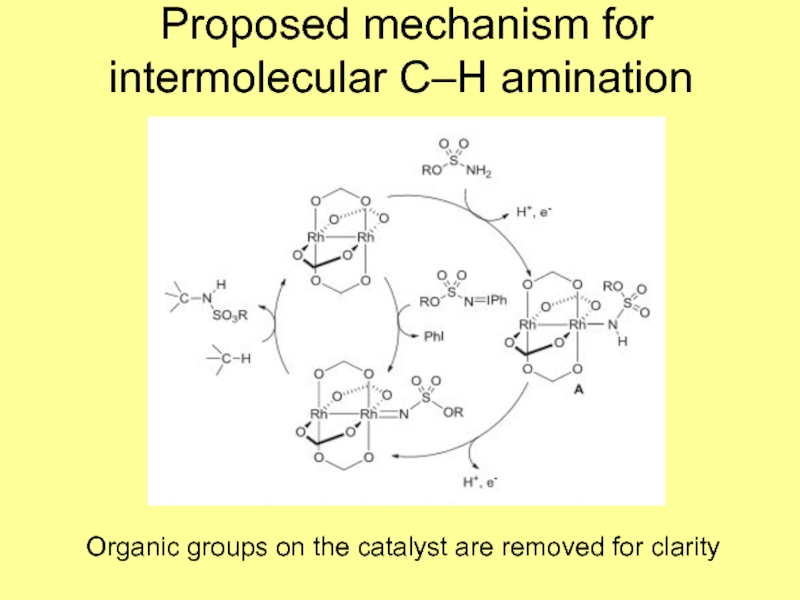
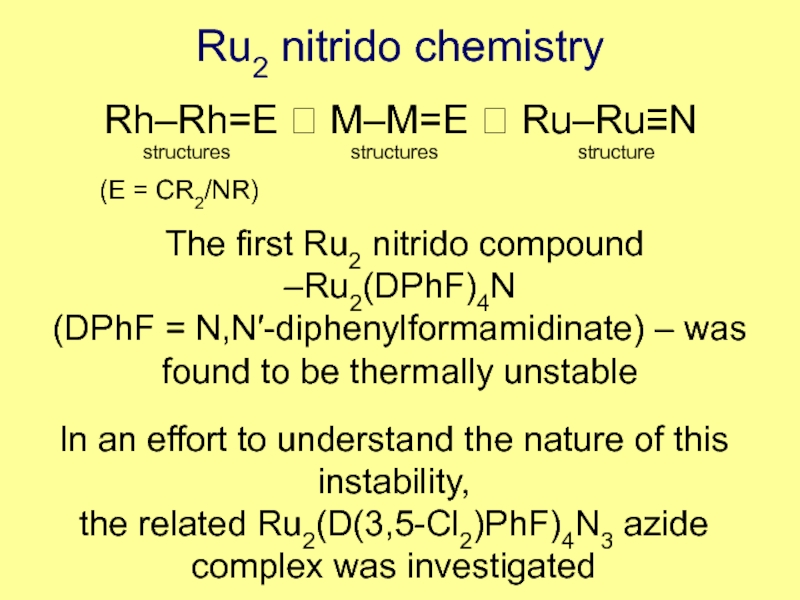
![Crystal structure of Ru2[(D(3,5-Cl2)PhF)3(D(3,5-Cl2-2-NH)PhF)]](/img/tmb/4/351657/2bed9dcc089af7cff6abbbd7b7155344-800x.jpg)

